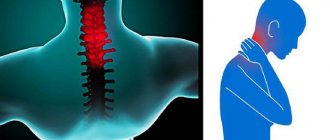What is narcolepsy?
Narcolepsy is a neurological sleep disorder characterized by chronic, excessive bouts of sleepiness during the day, sometimes called excessive daytime sleepiness (EDS). Episodes of drowsiness may last only a few seconds or a few minutes. These episodes vary in frequency from one to several in one day. Nighttime sleep may also be disrupted.
Three additional symptoms often associated with narcolepsy are sudden, extreme muscle weakness (cataplexy), a specific type of hallucination that occurs just before falling asleep or upon awakening, and brief episodes of paralysis upon awakening. Narcolepsy can also be associated with "automatic behavior", i.e. with automatic execution of something without saving it in memory after waking up.
The incidence of narcolepsy is approximately 1 in 2000, and most researchers believe that the disease remains undiagnosed or misdiagnosed in many patients. There is growing evidence that narcolepsy is an autoimmune disorder. Autoimmune diseases occur when the body's immune system mistakenly attacks healthy tissue or cells. In narcolepsy, the immune system destroys certain brain cells that produce a peptide called hypocretin (orexin). Hypocretin affects many brain functions, but the details of its action are not yet understood. Why the immune system attacks healthy cells in narcolepsy is unknown, but environmental and genetic factors may play a role in the development of the disorder.
Signs and symptoms
The development and severity of symptoms associated with narcolepsy vary greatly from person to person. The first symptoms appear one at a time; The onset of new symptoms may take years, with cataplexy usually preceding somnolence. Narcolepsy usually begins in adolescence, where initial symptoms are mild but worsen with age. Sometimes symptoms do not change for months, and sometimes symptoms can change very quickly. Depending on the severity of the disease, narcolepsy can dramatically affect a person's daily routine, disrupting all aspects of their life.
Excessive daytime sleepiness (EDS) is usually the first sign of narcolepsy. People with narcolepsy typically experience periods of sleepiness, fatigue, lack of energy, an overwhelming desire to sleep (“sleep attack”), and/or an inability to resist sleep. This tendency to become endlessly sleepy and/or fall asleep can occur every day, but the severity varies from day to day and throughout each day. These episodes are more likely to occur during monotonous, boring activities, such as watching television. However, attacks can occur at any time, even while a person is walking, talking, eating, or driving a car. Consequently, narcolepsy can seriously disrupt a person's life. Patients may fall asleep for short periods ranging from a few seconds to several minutes.
Narcolepsy can also disrupt sleep patterns at night. Patients may wake up frequently during the night and may remain awake for significant periods of the night. Despite the disruption of sleep patterns, the total sleep time for people with narcolepsy every 24 hours is generally normal, as they sleep multiple times during short periods of the day and night.
Many people with narcolepsy experience weakness and sudden loss of muscle tone (cataplexy). This often occurs during times of strong emotions such as laughter, anger, delight and/or surprise. Episodes of cataplexy may occur as short periods of partial muscle weakness and may vary in duration and severity. In some cases, the cataplectic attack may be barely noticeable. Sufferers may experience very short, mild episodes that cause the knees to buckle, the jaw to become full, or the eyelids to droop or the head to droop. Sometimes, in severe cases, there may be an almost complete loss of muscle control that lasts for several minutes. During a severe cataplectic attack, speech and movement may become difficult or impossible, although loss of consciousness does not occur. Cataplexy may improve as affected people get older.
Some people with narcolepsy do not have cataplexy and are not required to diagnose narcolepsy. Cataplexy usually develops about a few weeks to months after the onset of excessive daytime sleepiness. In rare cases, cataplexy may precede the development of difficulty maintaining vigilance.
Factors of sleep pathology
The brain is responsible for proper rest of the human body. In the course of research, scientists were able to find out that narcolepsy occurs due to insufficient amounts of neuropeptides (orexin), also known as protein neurotransmitters. The chemicals must maintain a state of wakefulness. In animals, as well as people with signs of narcolepsy, a sharp decrease in components in the cerebrospinal fluid (cerebrospinal fluid) was found.
Not a single scientist has been able to answer the question of why orexin production decreases. The main version remains genetic predisposition. HLA haplotypes cause structural destruction of nervous system cells (neurons).
It has been proven that sleep cycles are disrupted during illness. The structure of the transition from the slow resting phase to the fast one is lost. The latter comes much earlier. The system responsible for activating the brain allows REM sleep to occur even while awake. This is why clinical signs of daytime blackout appear at the most inopportune moment.
But still the gene factor is not enough. According to scientists, a provoking moment must come for the implementation of the disease mechanism:
- Traumatic brain injury, regardless of severity.
- Hormonal surge, sudden changes due to pregnancy or disruption of the endocrine and endocrine glands.
- Severe emotional shock. Both positive and negative events can influence.
- Diseases associated with infection of the body by pathogens, prions, and viruses.
Despite the fact that all assumptions have reasonable confirmation, the exact process of development of the disease has not yet been established.
Causes and risk factors
Narcolepsy with cataplexy (type 1) is associated with low levels of a certain brain chemical called hypocretin (also known as orexin). This chemical plays an important role in regulating sleep and other functions. Hypocretin also acts as a neurotransmitter, a chemical that modifies, enhances, or transmits nerve impulses from one nerve cell (neuron) to another, allowing the nerve cells to communicate. Researchers have determined that the number of hypocretin-producing neurons is significantly reduced in people with narcolepsy. Hypocretin-producing neurons are found in the hypothalamus, an area of the brain that regulates many functions, including sleep, appetite and body temperature. Some people lose up to 80-90 percent of the neurons in the hypothalamus that produce hypocretin.
In 2009, researchers discovered that people with narcolepsy have changes in a gene known as the T-cell receptor gene. (T cells are specialized immune cells that play a role in all immune system responses.) This T-cell receptor variant gives people a genetic predisposition to develop narcolepsy. A genetic predisposition means that a person carries the gene or genes for a disease, but the disorder may not manifest unless other additional factors are present. The genetic factors associated with narcolepsy are not sufficient to cause the disease themselves.
Many cases of narcolepsy are closely associated with a group of genes known as the human leukocyte antigen (HLA) complex, located on human chromosome 6. These genes play a role in regulating the proper function of the immune system. Patients often have variants in some of these genes. The exact role and significance of these HLAs in narcolepsy are not fully understood. Most HLA complex disorders have an immunological component to the disorder, either due to autoimmunity or an abnormal response of the immune system to a foreign substance. Researchers believe that HLA and a T-cell variant found in people with narcolepsy interact in a way that causes the destruction of brain cells that produce hypocretin.
The exact cause of narcolepsy without cataplexy (type 2) is unknown.
Etiology
To date, the causes of narcolepsy have not been sufficiently studied. There is an assumption that they are based on a lack of orexins (hypocretins), hypothalamic peptides. In patients with narcolepsy, a reduced content of orexin was found in the cerebrospinal fluid. This biologically active substance in the brain regulates the process of alternating slow and fast sleep.
In patients with narcolepsy, a close association was found with the histocompatibility antigen gene complex - HLA DR2/DQW1. Polysomnography has shown that those suffering from narcolepsy enter REM sleep prematurely, no more than 20 minutes after falling asleep.
Affected Populations
The exact number of people with narcolepsy in Russia is unknown. One estimate puts the prevalence at 0.03 to 0.16 percent of the total population in various ethnic groups worldwide. One US study found the incidence of new cases of narcolepsy to be 0.74 per 100,000 person-years in the general US population. The disorder is estimated to affect 1 in 2,000 people in the general population. However, because narcolepsy is often unrecognized or misdiagnosed, determining its true incidence in the general population is difficult.
Narcolepsy can develop at any time from early childhood to age 50. Two peak periods were identified; one is about 15 years old and the other is about 36 years old. Some researchers believe that narcolepsy is underdiagnosed in children. Narcolepsy usually lasts a lifetime. Although the nature and severity of the symptoms experienced by the patient may change over time, the disease does not progress.
Disorders with similar symptoms
Symptoms of the following conditions may be similar to those of narcolepsy. Comparisons can be useful for differential diagnosis:
- Idiopathic hypersomnia is a rare condition characterized by episodes of severe sleepiness that occur for an unknown reason (idiopathic). Episodes may be chronic or persistent. The disorder differs from narcolepsy in that sufferers do not experience sudden sleep episodes or develop cataplexy. In addition, victims do not feel rested after sleep. Some patients with idiopathic hypersomnia sleep for long periods of time (eg, more than 10 hours); others sleep for shorter periods (eg, less than 10 hours). Idiopathic hypersomnia can disrupt many aspects of life. Behavioral changes and certain medications are used to treat the disorder.
- Sleep apnea is a common sleep disorder characterized by temporary, repeated interruptions in breathing during sleep. Symptoms of the disorder include frequent interruptions in sleep at night, excessive sleepiness during the day, loud snoring, irritability, poor concentration and/or impaired cognitive abilities. Obesity is commonly associated with sleep apnea, including obesity in the neck and narrowed airways in the neck. In obstructive sleep apnea, the most common form of sleep apnea, difficulty breathing is interrupted by a collapsed airway. Partial awakening may then occur and the person may begin to breathe. Sleep resumes when breathing begins again. Untreated sleep apnea can be associated with high blood pressure (hypertension), irregular heartbeat, and an increased risk of heart attack, heart failure, stroke, and diabetes.
- Kleine - Levin (sleeping beauty syndrome) is a rare disease characterized by the need for excessive amounts of sleep (hypersomnolence) (i.e., up to 20 hours a day); excessive food consumption (compulsive hyperphagia); and behavioral changes, such as abnormally relaxed sexual desire. While awake, patients may exhibit irritability, lack of energy (lethargy), and/or lack of emotion (apathy). They may also appear confused (disoriented) and hallucinate. The symptoms of Kleine-Levin syndrome are cyclical. The victim may not experience symptoms for weeks or months. If present, symptoms may last for days to weeks. In some cases, symptoms associated with Kleine-Levin syndrome disappear over time with age. However, episodes may recur later in life. The exact cause of Kleine-Levin syndrome is not known.
Symptoms resembling those of narcolepsy can also occur after brain tumors (intracranial), head injuries, hardening of the arteries in the brain (cerebral arteriosclerosis), psychosis, and/or excessive amounts of protein in the blood due to kidney failure. Hypothyroidism, delayed sleep phase syndrome, periodic limb movement disorder, depression, hypoglycemia, and other conditions can also cause excessive daytime sleepiness.
Sleeping during pregnancy
A woman carrying a child should rest 10 hours a day. It is advisable to divide this time into two parts, that is, sleep at night and during the day. The body of the expectant mother experiences a heavy load: the heart and circulatory system work for two.
A woman may want to sleep constantly, this is due to disruptions in the endocrine system. Hypersomnia usually occurs early in pregnancy.
Not only the duration of sleep is important, but also its quality. To get enough sleep, you need to rest on a comfortable bed with a soft pillow; there are special models for pregnant women.
It is best to lie on your left side. If you turn to the right side, blood circulation will be disrupted and the load on the heart will increase. You can't sleep on your back because the genital artery is pressed.
Diagnostics
Narcolepsy is diagnosed based on a thorough clinical examination;
- a thorough patient and family history;
- objective testing of characteristic symptoms (eg, excessive daytime sleepiness, potentially associated with cataplexy, hypnagogic hallucinations, and/or sleep paralysis);
- specialized sleep studies.
The two main tests used to diagnose narcolepsy are overnight polysomnography (PSG) followed by multiple sleep latency test (MSLT). PSG is a test performed while you sleep and continuously measures various parameters including changes in brain waves, heart rate, eye movements, limb movements, muscle tone and breathing. The PSG is usually followed by the MTLS, which measures how quickly someone falls asleep every two hours throughout the day (4 or 5 times). People with narcolepsy fall asleep more easily during the day than people without narcolepsy. In addition, they will enter into dreaming (rapid eye movement sleep) even during short sleep, which a healthy, sound sleeper will not do.
Standard Treatments
Treatment for narcolepsy aims to address the specific symptoms that are present in each person. Various medications can help relieve certain symptoms associated with narcolepsy.
For people who experience excessive daytime sleepiness and sleep attacks, therapy may include the administration of certain stimulants, such as modafinil (Provigil). Modafinil was approved by the Food and Drug Administration (FDA) for the treatment of excessive daytime sleepiness in narcolepsy in 1999. Modafinil is currently the most widely prescribed drug for excessive daytime sleepiness. The drug's mechanism of action is different from other stimulants and does not affect alertness or memory. Additionally, evidence suggests that modafinil therapy is not associated with dependence or withdrawal symptoms and may therefore be an effective alternative to other treatments for excessive daytime sleepiness. Modafinil is generally associated with fewer side effects than previous drugs used to treat this condition.
Previous medications that have been used to treat excessive daytime sleepiness in narcolepsy include methylphenidate (Ritalin, Methylin), methamphetamine, or dextroamphetamine. These drugs stimulate the central nervous system and are still used when modafinil does not work. Because such medications may be associated with certain side effects, including nervousness, insomnia, or irritability, close monitoring by physicians is required to ensure appropriate dosage adjustments and the effectiveness of such therapy. In addition, if therapy is discontinued, careful monitoring and long-term follow-up by physicians may be required.
Additional stimulants that have been used to treat excessive daytime sleepiness and narcolepsy include manzindol, selegiline, and pemoline.
A variety of medications have been used to treat cataplexy. The orphan drug Xyrem, manufactured by Jazz Pharmaceuticals, has been approved by the FDA to treat cataplexy, the sudden loss of muscle control and weakness associated with narcolepsy. Xyrem is also effective in improving nighttime sleep in people with narcolepsy. Some people with narcolepsy who received high doses of the drug experienced improvement in daytime sleepiness. However, Xyrem is potentially associated with serious side effects. Xyrem's generic name is sodium hydroxybutyrate and is also known as gamma-hydroxybutyric acid (GHB).
People with cataplexy, sleep paralysis, and/or hypnagogic hallucinations can be treated with certain antidepressants. In particular, doctors often prescribe selective serotonin reuptake inhibitors, which suppress rapid eye movement sleep, to relieve these symptoms. Such drugs include, for example, fluoxetine (Prozac, Serafem and others), sertraline (Zoloft), atomoxetine (Strattera) and venlafaxine (Effexor). The most common side effects are decreased libido and delayed orgasm. Other side effects may include digestive problems, anxiety, headache and insomnia. Older tricyclic antidepressants such as imipramine, desimipramine, protriptyline and clomipramine may also be effective in reducing cataplexy, sleep paralysis and/or hallucinations, but many people are bothered by side effects including dry mouth and constipation.
In addition to drug therapy, many people have benefited from behavior modification. Regular sleep habits are important for people with narcolepsy, including ensuring a regular bedtime and avoiding interruptions in sleep. If possible, taking regular naps during the day can help control excessive daytime sleepiness. Regular exercise is also recommended. Affected individuals should discuss establishing an appropriate sleep schedule with their physician.
Literature
- Wayne A.M.
Hypersomnic syndrome (Narcolepsy and other forms of pathological drowsiness). - M.: Medicine, 1966.
5 sleep disorders that prevent you from getting enough sleep
A person sleeps on average a third of his life. Sleep is the only mechanism to “reboot” the brain. It’s hard for those who can’t afford to get a good night’s sleep because they suffer from sleep disorders.
Severe snoring not only creates problems for others, but can be a symptom of a dangerous sleep disorder - sleep apnea, or sleep apnea. A snorer may have up to 500 pauses in breathing per night, meaning they will not breathe for a total of about four hours, but will not be able to remember it.
Apnea is dangerous because it causes a lack of oxygen in the blood, and people suffering from it constantly do not get enough sleep and feel tired. During moments of holding their breath, sleepers turn around in their sleep, but do not wake up. Breathing resumes with loud snoring. Gradually, the lack of oxygen leads to heart rhythm disturbances and excessive stress on the brain, which can cause strokes and heart attacks. Because of these dangers, people have long tried to combat apnea: there are even special machines that record the volume of the environment and wake a person if he snores.
Narcolepsy is a disease in which a person constantly wants to sleep. Also called paroxysms of irresistible sleepiness and Gelineau's disease. The disease occurs infrequently, affecting approximately 20-40 people out of 100,000.
Scientists associate narcolepsy with disintegration syndrome, an untimely onset of sleep phases. Patients suffering from narcolepsy, although they sleep a lot, do not get enough sleep, because by skipping the slow-wave sleep phase, they immediately find themselves in the REM sleep phase, the encephalogram curve of which resembles the encephalogram curve of a awake person; it is almost impossible to get enough sleep in this mode. We get enough sleep in the deep delta sleep stage; patients with narcolepsy do not fall into this phase.
The causes of narcolepsy are still unclear. Some doctors believe that the culprit of the disease is the brain neurotransmitter hypocretin. It is he who regulates the REM sleep phase and wakefulness. If the cells of this neurotransmitter are damaged, it leads to sleep disorders.
Bruxism is grinding your teeth while you sleep. In severe cases, the creaking can be such that it disturbs the sleep of others. People suffering from nighttime bruxism experience pain in the facial muscles, noises and pain in the ears, and headaches may also appear. An obvious and serious consequence of bruxism is the destruction of tooth enamel and, as a result, increased tooth sensitivity.
Bruxism must be treated. Typically, psychological therapy and massage are used for treatment, and mouthguards are also used as a temporary protective measure. Bruxism is most often a symptom of increased stress and psychological fatigue, so first of all, a person who is experiencing teeth grinding needs to rest a little.
A person suffering from hypersomnia can sleep up to 18 hours a day, but he will not be able to get enough sleep. This form of sleep disorder is not so common - according to statistics from the American Medical Association, 200-300 people suffer from chronic hypersomnia today.
With hypersomnia, a person cannot get enough sleep, constantly wants to sleep, cannot fully wake up, which is why he is constantly in a “sleep intoxication.” Some patients also report increased sweating and headaches.
Hypersomnia can be temporary and occurs even in healthy people in situations of constant lack of sleep, stress or great physical fatigue.
Hyperosmnia that continues for a long time may be a syndrome of mental illness, an overdose of sleeping pills, or a lack of oxygen in the brain as a result of sleep apnea.
Medicine does not yet have a clear explanation for somnambulism. In 2002, the American Academy of Medicine concluded that somnambulism can be classified as a genetic disease. Having analyzed the DNA of sleepwalkers from a large test group, doctors discovered a region on the 20th chromosome (locus 20q12-q13.12). The presence of even one copy of this DNA fragment gave a 50% probability of signs of sleepwalking. Interestingly, sleepwalking is a “companion” of creative people. Vladimir Vernadsky, Anna Akhmatova, and Vladimir Mayakovsky “walked in their sleep.”
The most famous example of a talented sleepwalker of our day is Meath Lee Hadwin (on video). He has suffered from somnambulism since childhood. Although, it would be more correct to say that it is not he who suffers, but all the objects around him. Since the age of ten, Lee has been drawing whimsical sketches, sketches and entire surreal canvases on everything that comes to his hands.
}?>
There is an opinion that good, sound sleep is good for health. But there is also the other side of the coin: staying in the arms of Morpheus for too long is not just harmful, but very harmful. Impaired mental activity, a bouquet of chronic diseases, cardiovascular pathologies - all this is at risk for people who love to soak in bed for more than 9-10 hours a day. Thus, long sleep is extremely harmful to the mind and body. What should those who simply cannot wake up on time do, even after setting several alarms at night, and what does this condition indicate? The answer to this question will be discussed in this material.
What research has been carried out in this direction?
According to research data conducted by Spanish scientists on 3,300 people, respondents who liked to sleep very long in their youth and even take a nap at lunchtime, in old age are 2 times more likely to suffer from dementia in the senile period. The exact reason for this phenomenon is not entirely clear. In addition, not so long ago a mutual connection was discovered between prolonged sleep and the formation of heart and vascular diseases, diabetes, and hypertension. Smoking and alcohol abuse have similar effects. Therefore, those who like to set a record on their sleep run the risk of contracting these serious ailments.
Idiopathic hypersomnia
This phenomenon is otherwise called idiopathic hypersomnia. It is a disorder accompanied by the formation of increased sleepiness. People who suffer from this disease experience fatigue, weakness, and apathy, which interfere with normal life activities. It persists even though sleep lasts a very long time. Such patients may sleep significantly more than the required eight hours. Sometimes they set a record and sleep from 12 to 14 hours. Even after this time, they have difficulty waking up.
If you wake up a patient suffering from such a disorder, he will still not be rested. His retardation will be noticeable in appearance. This phenomenon is otherwise called “sleep intoxication.” It turns out that no matter how much an individual sleeps, he still experiences drowsiness. Often, because of this problem, typos affect your career, studies, and social life. After all, prolonged sleep significantly disrupts performance: the patient can look at one point for several hours and ignore reality. You can notice from the outside that a person has forgotten the rules for doing everyday things. Those who sleep a lot may suffer from migraines in 30% of cases. About 15% of all patients show signs of impending depression.
You might suddenly fall asleep right at work.
Despite how long the sick person has slept, his condition does not improve. In this case, there is a possibility of paralysis and hallucinations. But patients suffering from symptoms of hypersomnia do not experience attacks of weakness, as in other similar diseases. The situation with this disease is aggravated by the fact that early diagnosis is accompanied by certain difficulties, and at a later stage it becomes increasingly difficult to select adequate treatment. It is also influenced by the fact that the level of people’s awareness of this pathology remains minimal, which leads to the process of stigmatization of patients.
Who is susceptible to this disease
Over time, signs of this condition begin to appear in people over 30 years of age. They are pronounced and interfere with the normal process of life, without changing over time. Although in isolated cases, some symptoms disappear on their own. Prolonged sleep is less common than narcolepsy and occurs only in rare cases in children. Regarding the prevalence depending on gender, the disease occurs equally in men and women. In practice, a family origin of the disease has been observed, but specific genes responsible for this pathology have not been identified.
Long sleep - disease or normal
If a person notices such phenomena in himself and discovers that he sleeps too long, this is definitely a pathological process, and it is not the norm. Currently, there are several reasons for long sleep, why a person constantly wants to sleep.
One of the reasons is intense physical activity.
- pathologies of a chronic nature;
- endocrine dysfunction;
- protracted infectious processes;
- stress and depression;
- emotional shocks;
- excessive physical activity;
- hunger or, conversely, gluttony;
- high mental stress;
- weakness of the body's protective option;
- brain damage and mental problems;
- diseases of a neurological nature;
- lifestyle changes;
- group of somatic diseases.
So, we looked at why this happens and what are the factors influencing this condition.
Symptoms of hypersomnia
This disease is characterized by many symptoms. It is their presence that allows us to judge that this disease exists. Among the main symptoms of this pathology are the following:
- state of drowsiness;
- pronounced snoring;
- sudden falling asleep;
- broken sleep time record;
- stopping breathing during sleep;
- inability to get enough sleep;
- migraine and dizziness;
- feeling of weakness;
- loss of vision;
- muscle paralysis;
- convulsions;
- changes in pressure in the arteries;
- decreased heart rate.
Symptoms appear depending on the cause of hypersomnia. They can appear at any time. For example, there is a possibility of falling asleep while driving or at work, as well as while performing other important tasks.
Suddenly fell asleep
It is worth noting that people who suffer from this condition are never in a cheerful state. As a result, they often have to lose social contacts and refuse to perform work responsibilities. In this case, there may be dreams that the patient most often does not remember after waking up.
Should I get rid of long sleep?
If sleep is too long a process and a favorite activity for you, you should consult a doctor. He will prescribe a set of examinations, including the following:
- Donating blood to determine traces of drugs and drugs; this factor will allow you to establish or exclude certain causes of this condition.
- A detailed study lasting overnight and the next day. It includes conducting an instrumental study at night - polysomnography, which involves recording electrical brain, cardiac, muscle activity and respiratory function. Movements performed by the limbs are also recorded. Thanks to this procedure, it is possible to determine the presence or absence of other sleep disorders that cause or worsen the problems.
- A continuation of the previous examination is carried out the next day and involves studying episodes of daytime sleep. It is called the Multiple Sleep Latency Test (MSLT). This study involves a series of sleep attempts during the daytime. A similar study is carried out in the diagnostic practice of narcolepsy.
You need to tell your doctor your sleep record (maximum time spent sleeping), and also follow the basic rules indicated by the specialist.
The sleep record is 40 years. No need to strive there










